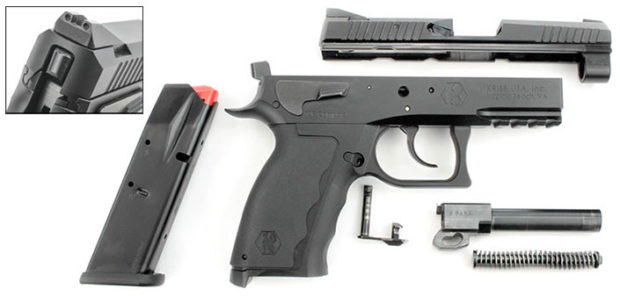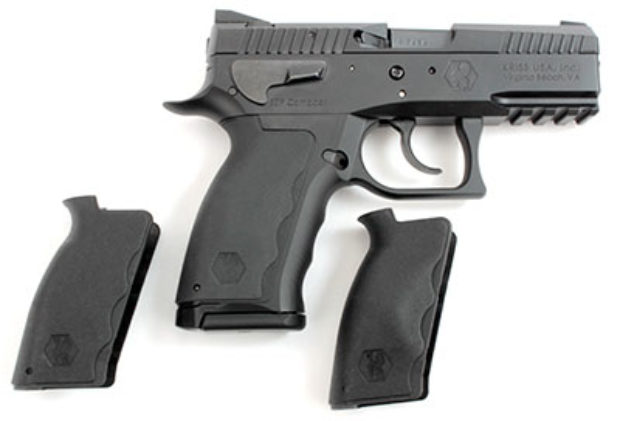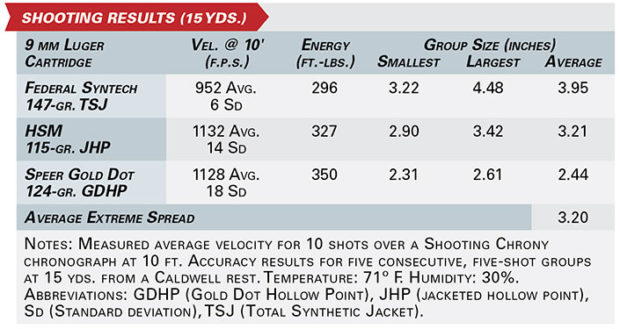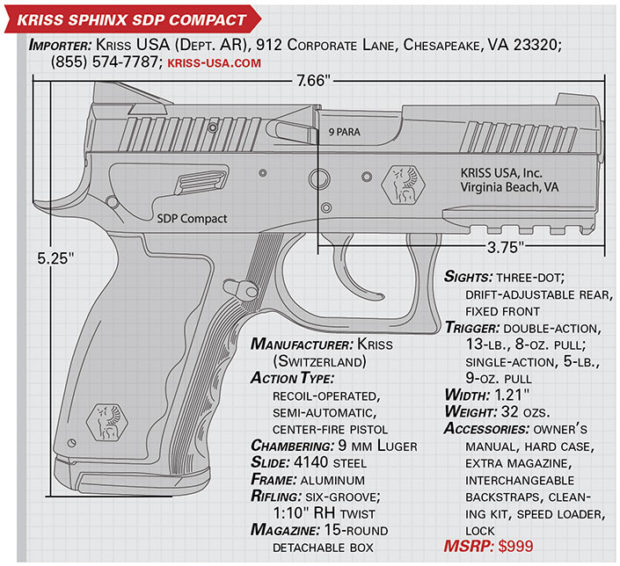Switzerland maintains an impeccable reputation for fine machining, particularly with regards to small parts. It is acknowledged worldwide for its knives and watches—and, to a smaller audience, for its firearms. Sphinx pistols are a case in point, and we were fortunate to obtain a sample of the company’s SDP Compact for evaluation. Like its larger brother, the SDP Duty, this pistol is imported into America by Kriss, the company best known for its line of Vector carbines and submachine guns. The Sphinx pistols have been sought after by IPSC competitors and law enforcement agencies for decades, largely because of the hybrid design that makes them suitable for both duty and competition use.
The SDP Compact is a recoil-operated, center-fire semi-automatic pistol chambered in 9 mm Luger. It consists of a steel slide and barrel assembly that is hand-fitted to an aircraft-grade, hard-coat-anodized aluminum frame. Toward the rear of the frame, you will find bilateral decockers, as the SDP uses a double-action/single-action configuration. Just in front of the left-side decocker is a slide stop that can easily be actuated by the right thumb or the left trigger finger. Both of these controls are built with a stepped contour for easy manipulation with minimal risk of snagging. The SDP Compact also makes use of a low-profile hammer to further reduce this hazard.

–
While the SDP is built with a passive firing pin block safety, there is no manual safety other than the security of a measured 13-lb., 8-oz., double-action trigger pull. While this is quite heavy, subsequent shots are significantly easier in single-action mode with the pull weight on our test model measuring 5 lbs., 9 ozs.—light enough for competition, but not so light that it might be considered dangerous for defensive use.
The pistol feeds from a 15-round, double-stack, detachable box magazine that is released by a push button located on the left side of the frame. The pistol’s interchangeable backstrap is a one-piece rubber insert that wraps around both sides of the grip, and extra inserts included with the gun allow the shooter to fine-tune the circumference of the grip to the dimensions of his or her hands. Completing the grip are deeply machined finger grooves with vertical striations cut into the frontstrap. Machined into the SDP Compact’s dustcover is a four-slot Picatinny rail for the attachment of accessories such as flashlights or lasers.

In a manner similar to the CZ 75 and its imitators, the SDP employs a reversed-rail interface, whereby the slide nests within the frame’s rails rather than overhanging them. This arrangement minimizes slide height, resulting in a naturally low bore axis, but also limits the gripping area on the slide. To help mitigate this issue, sharp cocking serrations were cut into the slide both fore and aft, and we found them to be necessary for sure manipulation of the slide.
The extractor performs double duty as a loaded-chamber indicator, allowing just a sliver of the case to show when the chamber is occupied. At the rear of the slide is a metallic rear sight that is dovetailed into the slide. This makes it drift-adjustable for windage, however, no adjustment is available for elevation. A fixed front sight at the front of the slide features a white dot to aid in low-light target acquisition.
Our range day consisted of accuracy testing with Federal’s Syntech training ammunition, as well as a defensive loading from both Speer and HSM. We achieved 100 percent reliability through our 500-round test and found the design to be quite controllable. Most of us thought that the deeply curved trigger bow greatly aided in navigating the pistol’s heavy double-action pull, but it was still just a little too heavy and gritty for most of the evaluators’ tastes.

However, while the double-action mode left a bit to be desired, single-action was excellent, as it broke cleanly and reset just shy of the halfway point. Double taps and transitions were smooth, and it quickly became evident why many choose to compete with this pistol. While accuracy at 15 yds. was adequate but unexceptional, averaging slightly larger than 3″ groups, we found it quite simple to keep our shots within the “A” zone of a standard IPSC target. The best group of the day belonged to the Speer Gold Dot ammunition, measuring 2.31″; we also saw respectable accuracy with the HSM 115-gr. offering and wouldn’t hesitate to keep a few boxes of that on hand either.
At 32 ozs., the Sphinx SDP Compact may be a bit heavy for IWB carry for some, but it would make a good pistol for OWB concealment, particularly in cold weather under heavy clothing. It also makes a terrific home-defense pistol, where its 7.66″ footprint is relatively easy to secure in a quick-access safe. Overall, for anyone seeking a well-made, good-looking pistol with which to protect the family or compete in practical shooting sports, the Kriss Sphinx SDP Compact deserves a serious look.



